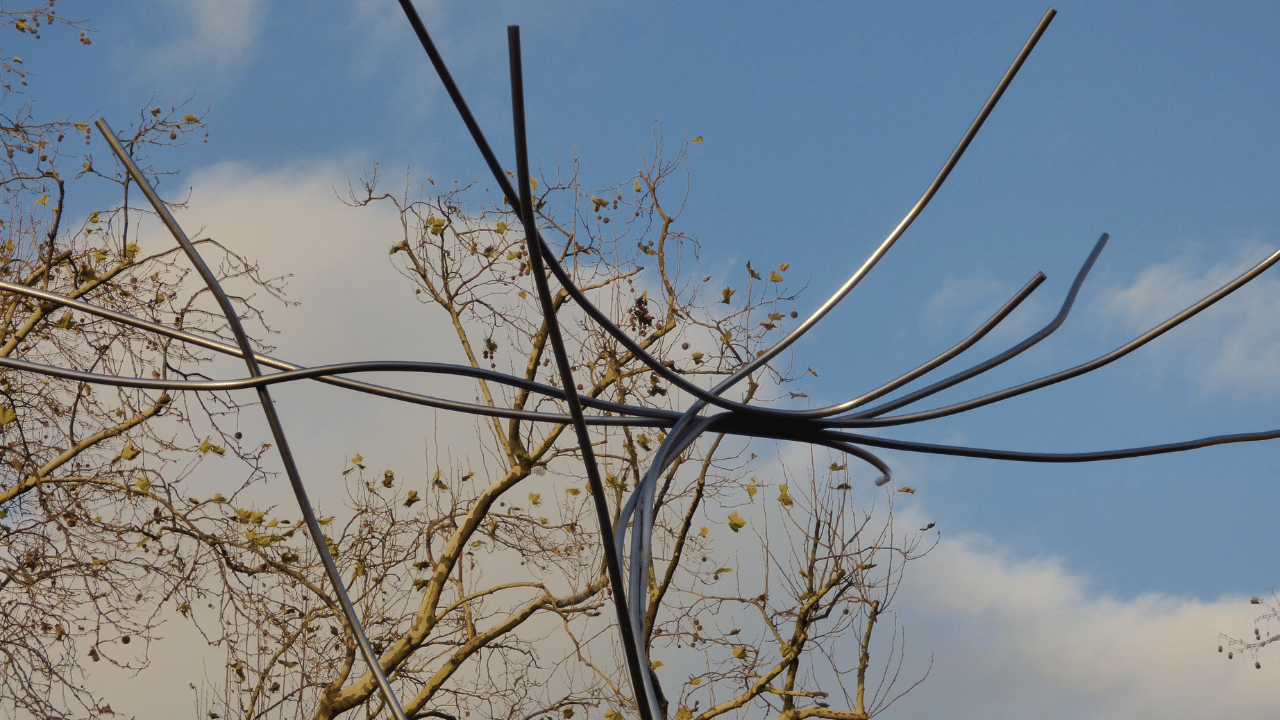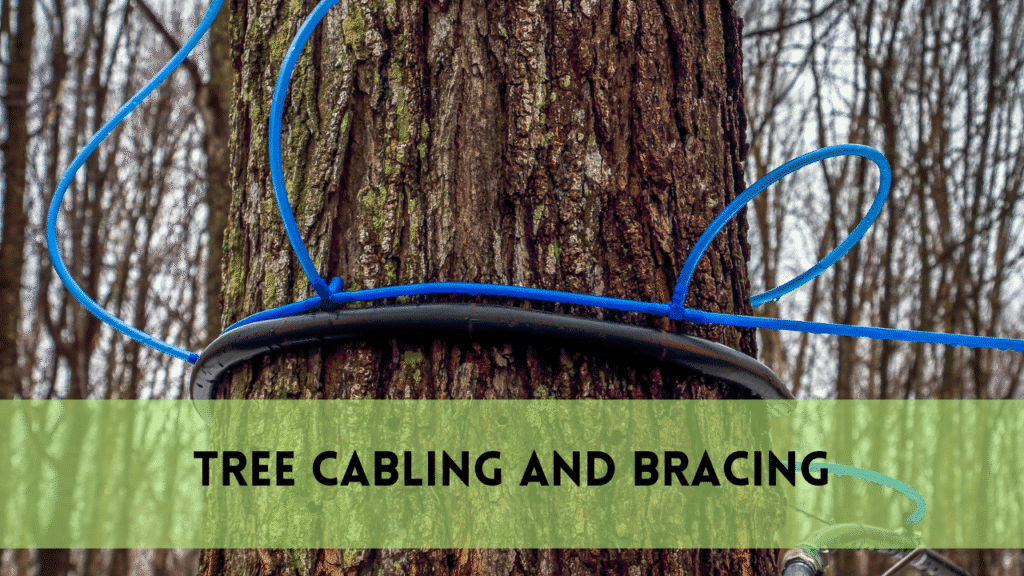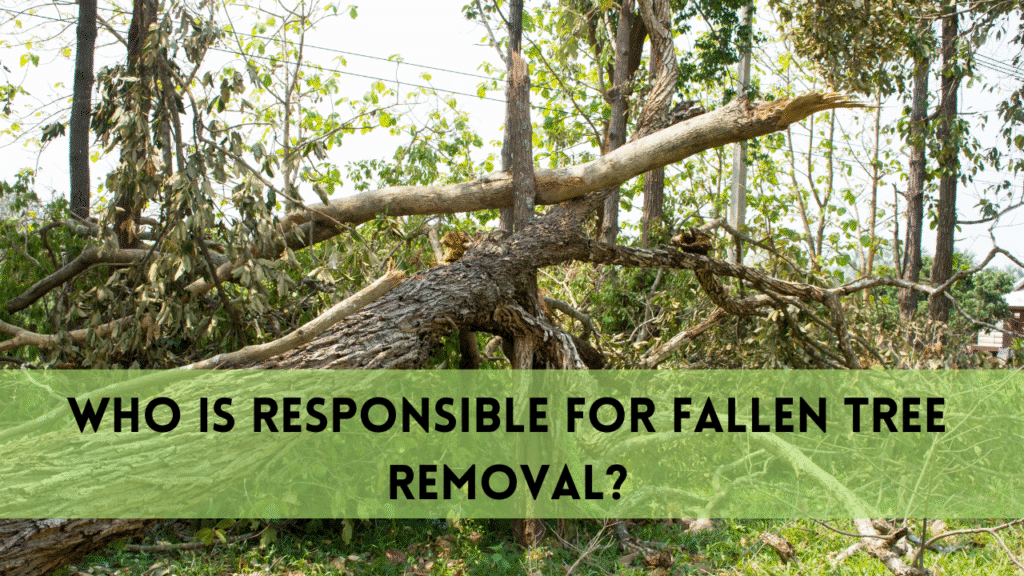Tree Bracing and cabling are two essential methods used by arborists to help support damaged or weak trees. If a tree is damaged or has split branches, leaning trunk or several branches, these methods aid in strengthening the structure of the tree and help prevent the possibility of catastrophic failure. Without adequate support weakening the tree, it could be a serious risk, especially when it is a storm or a high wind.
Think of an oak in the backyard with its enormous branches spreading far. In time some of its main branches begins to break under the weight of its own. If left unattended, it can crack and harm your roof, or more seriously, cause injury to anyone. This is where tree cabling and bracing comes in. Through the installation of flexible cables and braces that are rigid tree arborists can distribute stress and allow trees to grow and thrive for many years.
Why Tree Cabling and Bracing Matters
They don’t heal as humans do Instead, they create a protective layer around wounds, rather than healing them. This is a natural process, which means areas that are weak remain vulnerable. Tree cabling and bracing provides external support, while reducing stress on areas that are weak.
These methods are essential:
- Protects property from Damage A falling branch could cause damage to cars or roofs, as well as power lines.
- Restores mature Trees In lieu of taking down a loved tree, cabling helps preserve its beauty.
- Improves safety It reduces the danger of limb injuries that occur suddenly safeguarding pets and people.
Without bracing and cabling for trees numerous old or unsound trees would fall.
When Is Tree Cabling and Bracing Necessary?
Not all trees require support However, there are some certain warning signs that are clear:
- Split branches or trunks If a tree is in a large crack, cables can help hold it in place.
- Limbs that are heavy and overextended Large branches with no the proper balance might require bracing.
- trees that lean A sudden tilt may indicate damage to the root that requires stabilization.
- Past Storm Damage Unstable spots caused by past storms can make trees more susceptible.
A certified arborist can evaluate whether bracing and tree cabling are the best options. Sometimes, trimming or removal is better than nothing. But whenever possible, strengthening extends the lifespan of trees.

How Tree Cabling and Bracing Work
These methods employ specialized hardware to strengthen weak points.
1. Flexible Steel Cables
High-strength cables can be inserted between the main branches or trunks that allow for slight movement, while making sure that there are no risky splits. They are anchored to strong wood (never decayed regions) and are adjusted to grow with the tree.
2. Rigid Rods (Bracing)
For more severe splits threaded rods can be drilled through weak unions and bolted together. As opposed to cables, braces are rigid they provide solid support when any movement could cause damage.
Both procedures require a certain amount of precision. Improper installation could harm the tree even more. Professional arborists meticulously plan each step to ensure that the tree is healthy and increasing stability.
The Benefits of Professional Tree Cabling and Bracing
There are DIY solutions, but poor cabling can be damaged when you need it the most. Professionals ensure:
- Right Tension It’s too tight and the cable impedes growth; too loose and it’s useless.
- Secure Hardware Positioning Drilling in the wrong place could cause diseases.
- Long-Term Monitoring – Trees change over time, requiring adjustments.
The investment in tree cabling and bracing ensures that your tree receives the proper help without doing any damage.
Common Myths About Tree Cabling and Bracing
Myth 1: “Cables Make Trees Weak”
Truth: Correctly installed cables can reduce stress on weak areas which allows the tree to get stronger as time passes.
Myth 2: “Only Old Trees Need Bracing”
Truth Trees that are young and have poor structures (like small branch angles) are also able to benefit.
Myth 3: “It’s a Permanent Fix”
Truth: Braces and cables require inspections every couple of years, as the tree grows.
The knowledge gained from these studies can help homeowners make informed choices about tree maintenance.
FAQs
How long do bracing and tree cabling last?
The majority of systems last between 5 and 10 years, but they require periodic inspections to make sure they are efficient.
Can a tree be wired?
Yes, but seriously decayed or diseased trees might require removal. An arborist will determine if the tree is suitable.
Does cabling cause harm to the tree?
If properly installed when they are installed correctly, braces and cables are less likely to cause damage and encourage healthy growth.
How much will tree cabling cost?
Prices differ based on size and complexity, however it’s much less expensive than taking down an older tree.
Do I have the ability to install tree cable by myself?
Improper installation can worsen damage. Hire a professional arborist to ensure safety and efficiency.
Conclusion: Give Your Trees the Support They Need
Bracing and tree cabling aren’t just quick fixes. They’re long-term strategies that will help you preserve your trees in a safe manner. If you’re looking to protect a century-old oak or stabilizing an adobe tree with a weak structure these techniques can help prevent catastrophes and preserve the nature’s beauty.
If you believe that your tree requires help, you shouldn’t just wait until another storm. Contact a certified arborist to assess whether tree cabling or bracing is the best solution. Your trees, and your property, will be grateful to you for it.



